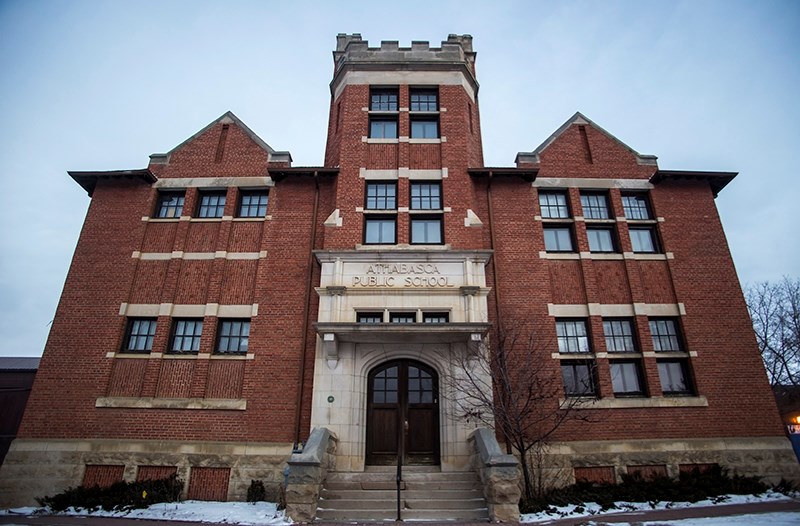The Town of Athabasca’s council and Athabasca County council have cleared the air regarding abatement work required at the Old Brick School.
On March 14, both councils agreed to approve hazardous material abatement work of up $10,000 following a joint meeting. County council passed a motion, while the town is scheduled to discuss the issue again at its meeting March 21.
Athabasca County tourism and development officer Robert Buckle said it was good that a firm decision was made.
“It’s great to be at this point now,” he said. “And I’m sure the councils are happy with the fact that we’re taking some steps forward.”
Buckle was present at the meeting where he outlined the three options available for addressing asbestos and lead paint present in the school’s boiler room, recommending to both councils that they remove the lead paint from it and then seal the room with wood paneling.
There were concerns around the table that these steps would not fully address the risks raised by the hazardous materials assessment report on the school. County Coun. Larry Armfelt said he was still worried about what the air quality would be like in the building after the boiler room is sealed.
“We just have to do a superb job on this,” he said. “I look at $10,000 and say ‘What is the future air quality like?’ and it scares me.”
Town Coun. Steven Schafer was in favour of the full abatement option.
“That’s the way we need to go if we see a future in this building,” he said. “It would be huge if we could do the things that we need to do, so that whoever takes over can take the next step.”
Buckle responded by saying that in addition to its $140,000 cost, full abatement would render the building unuseable, since all its walls would be stripped, requiring a redesign. He added that air testing would be done as a part of the abatement process.
“It’s actually a required part of the whole process,” he said. “We aren’t doing anything special here. It’s what’s required under best practices.”
Jesse Ajayi, Athabasca County’s director of planning and development, added that sealing work has already been completed to address the risks outlined by the hazardous materials report. These included taping up the boiler room area and further sealing it with plastic sheeting, a step Ajayi said went, “Above and beyond what was recommended as the minimum step in the report to prevent dust getting into the atmosphere.”
He added that while the risks were present, they were minimal ones that could be addressed by the $10,000 abatement.
“The way that administration view level one is not really as a first step towards taking great action on the brick school,” he said. “It’s more of a risk mitigation step.”
Following the discussion, Coun. Kevin Haines made a motion to proceed with the level one option subject to the town’s approval and participation. The motion carried unanimously.
Coun. Larry Armfelt then made a motion to authorize administration to investigate the brick school’s roof repair costs. The motion also carried unanimously.
In a subsequent interview, Mayor Roger Morrill said town council will discuss and vote on whether or not to proceed with abatement at its next meeting March 21. He said he anticipates the town approving the work.
“Just judging from the comments around the table there didn’t seem to be any issues with what Athabasca County had decided on,” he said.



